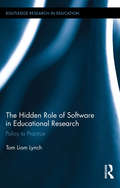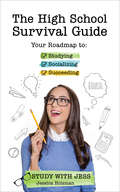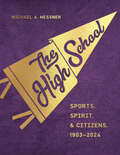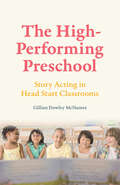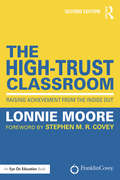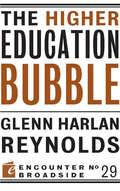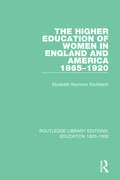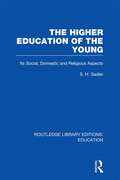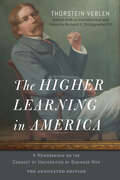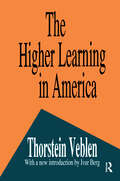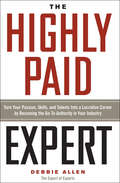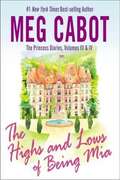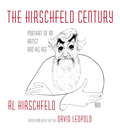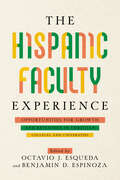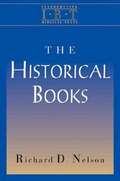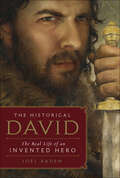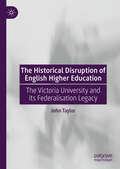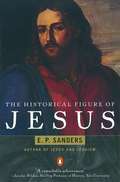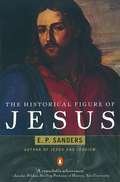- Table View
- List View
The Hidden Role of Software in Educational Research: Policy to Practice (Routledge Research in Education #143)
by Tom Liam LynchEducational research often discounts the uniqueness and ubiquity of software and the hidden political, economic and epistemological ways it impacts teaching and learning in K-12 settings. Drawing on theories and methodologies from English education, critical discourse analysis, multimodal semiotics and digital humanities, this volume exposes the problems of technology in schools and refocuses the conversation on software. This shifting of focus invites more nuanced questions concerning the role of software in school reform and classroom instruction, and takes a critical stance on software’s role in education. This volume explores the ontology of software and the ways it is construed within educational policy discussions. It is beneficial to schools, companies, policy makers and practitioners seeking a more theoretical framework for technology in education.
The High Achiever's Guide to Happiness
by Dr Vance Caesar Carol Ann CaesarDo you feel that happiness and fulfillment are still missing even after reaching the high goals you set for yourself? This inspirational resource is a must for leaders who want to connect personal values, vision, and satisfaction to life and work. In this simple, straightforward leadership coaching guide, the authors provide seven keys to gaining fulfillment in your life and work: This inspirational resource is a must for leaders who want to connect personal values, vision, and satisfaction to life and work. In this simple, straightforward leadership coaching guide, the authors provide seven keys to gaining fulfillment in your life and work: Discovering your Purpose Possessing Vision Finding Meaningful Work Energizing Relationships Creating Peace Reviewing, Renewing, and Recommitting Forming Discipline
The High School Survival Guide: Your Roadmap to Studying, Socializing & Succeeding
by Jessica HolsmanThe star of YouTube’s Study with Jess reveals how to become your most organized, productive, and confident self!So many students feel anxious, stressed, and overwhelmed at the thought of starting high school. But what if you can love high school, form amazing friendships, grow your self-esteem, and get an excellent education all at the same time?High school is all about learning how to learn. In The High School Survival Guide, readers will learn everything from setting up the ideal study space to building confidence and setting effective goals. From shopping for supplies to acing exams, Jess teaches you how to:Identify which study techniques work best for youImprove your focus during classAvoid burnout and manage study-related stress and anxiety, and more“This is a really sweet, encouraging handbook to have during a time when we all need that extra motivation and support.” —Natalie Tran, The Community Channel
The High School: Sports, Spirit, and Citizens, 1903-2024 (Critical Issues in Sport and Society)
by Michael A. MessnerHigh school yearbooks provide both a vivid snapshot of student life and a reflection of what the adults in the community valued the most. For instance, athletics are often covered more than academics, and boys’ sports routinely receive more attention than girls’ sports. But how have those values changed over time? In The High School, acclaimed sociologist Michael A. Messner reads through 120 years of El Gabilan, the yearbook from his own alma mater, Salinas High School in California, where his father taught and coached. Treating the yearbooks as a historical archive, Messner makes surprising discoveries about the school he thought he knew so well. For example, over fifty years before Title IX, the earliest yearbooks gave equal spotlights to boys’ and girls’ athletics, while the cheerleaders were all boys. Tracing American life and culture from 1903 to 2024, Messner illuminates shifts in social practices at his high school that reflect broader changes in American culture across the twentieth century. The High School spotlights how the meanings and iconography of certain activities have changed radically over the decades, even as the “sports spirit complex”—involving athletes, cheerleaders, band members, and community boosters—has remained a central part of the high school experience. By exploring evolving sports cultures, socioeconomic conditions, racial demographics, and gender norms, Messner offers a fresh perspective on a defining feature of American teenage life.
The High-Performing Preschool: Story Acting in Head Start Classrooms
by Gillian Dowley McnameeThe High-Performing Preschool takes readers into the lives of three- and four-year-old Head Start students during their first year of school and focuses on the centerpiece of their school day: story acting. In this activity, students act out stories from high-quality children’s literature as well as stories dictated by their peers. Drawing on a unique pair of thinkers--Russian psychologist Lev Vygotsky and renowned American teacher and educational writer Vivian G. Paley--Gillian Dowley McNamee elucidates the ways, and reasons, this activity is so successful. She shows how story acting offers a larger blueprint for curricula that helps ensure all preschools--not just those for society’s well-to-do--are excellent. McNamee outlines how story acting cultivates children’s oral and written language skills. She shows how it creates a crucial opportunity for teachers to guide children inside the interior logic and premises of an idea, and how it fosters the creation of a literary community. Starting with Vygotsky and Paley, McNamee paints a detailed portrait of high-quality preschool teaching, showing how educators can deliver on the promise of Head Start and provide a setting for all young children to become articulate, thoughtful, and literate learners.
The High-Trust Classroom: Raising Achievement from the Inside Out
by Lonnie MooreCreate a classroom environment where students trust their teacher—and one another! In the second edition of this bestseller, co-published by Routledge and Franklin Covey, you’ll learn how to establish the 25 qualities of the high-trust classroom. All change begins with self-awareness, and this book will help you identify the things that you can do personally and professionally to build trust and engage the learner. You’ll learn how to: Manage your emotions to promote a calm, safe, and welcoming classroom environment; Plan effective lessons by setting measurable goals for your students and helping them achieve to their fullest potential; Communicate clearly with your students to build trust and convey expectations with a positive attitude; Become an inspirational and motivating figure in your students’ lives; And much, much more! This updated edition includes a new section on scoreboarding – visually tracking daily or weekly progress to help drive personal and professional growth – as well as a section on getting students to take ownership of their learning. Whether you are a new or veteran teacher, this book will help you develop a personal growth plan to create a classroom in which all students feel valued, motivated, and inspired.
The Higher Education Bubble
by Glenn Harlan ReynoldsAmerica is facing a higher education bubble. Like the housing bubble, it is the product of cheap credit coupled with popular expectations of ever-increasing returns on investment, and as with housing prices, the cheap credit has caused college tuitions to vastly outpace inflation and family incomes. Now this bubble is bursting.In this Broadside, Glenn Harlan Reynolds explains the causes and effects of this bubble and the steps colleges and universities must take to ensure their survival. Many graduates are unable to secure employment sufficient to pay off their loans, which are usually not dischargeable in bankruptcy. As students become less willing to incur debt for education, colleges and universities will have to adapt to a new world of cost pressures and declining public support.
The Higher Education Manager's Handbook: Effective Leadership and Management in Universities and Colleges
by Peter McCafferyDrawing on professional experience from university innovators and a wealth of international case studies, The Higher Education Manager’s Handbook offers practical advice and guidance on all aspects of university management. An engaging, comprehensive and highly accessible practitioner’s guide, the book tackles all the key areas central to the job of managing in higher education, from understanding the culture of your university and the role it plays, to providing effective leadership and managing change. Now in a thoroughly updated third edition, the book is written from the unique perspective of the higher education manager, offering advice that can be implemented immediately by leaders at all levels. The book is organised into four pre-requisites that any prospective higher education manager must master if they are to be an effective university leader: Knowing your environment Knowing your university Knowing your department Knowing yourself Each of the chapters within these sections provides commentary and analysis of the particular role aspect under review, and offers advice and guidance on good practice, including case study examples and self-assessment tools. New topics include: The new higher education landscape The first 100 days Avoiding cognitive bias and developing a flexible mindset Strategic planning and Teaching Excellence Framework (TEF) Reviewing course portfolios and subject areas Improving student outcomes and staff experience Assessing and mitigating risk Project management and managing up Widening participation and social mobility Vice chancellors, university presidents, provosts and deans, heads of academic departments and university services, subject leaders, course directors and others in management positions within the field of higher education will find this book to be an irreplaceable resource that they will use time and time again.
The Higher Education System: Academic Organization in Cross-National Perspective
by Burton R. ClarkHow can we compare national systems of higher education, since their organization varies from country to country? Clark identifies the basic elements common to all such systems, and proceeds to thematic comparisons among a number of countries.
The Higher Education of Women in England and America, 1865-1920 (Routledge Library Editions: Education 1800-1926 #5)
by Elizabeth Seymour EschbachThis study, first published in 1993, traces the path of women toward intellectual emancipation from eighteenth-century precedents, through the hard-won access to college education in the nineteenth-century, to the triumphs of the early 1900s. The author compares women's experiences in both the US and England, and will be of interest to students of history, education and gender studies.
The Higher Education of the Young (Routledge Library Editions: Education)
by S H. SadlerTaking into account the rapid progress in all areas of life that was made at the turn of the 20th century this volume discusses how best to educate both sexes, from all social classes, referring to Greek, Roman and Egyptian education as a starting point.
The Higher Learning in America: A Memorandum on the Conduct of Universities by Business Men
by Robert Maynard HutchinsPerhaps the pivotal book in the reform of higher education in the United States, Robert M. Hutchins' classic is once again available, with a brilliant personal and professional appreciation by Harry S. Ashmore. When it was published in 1936The Higher Learning in Americabrought into focus the root causes of the controversies that still beset the nation's educational system. Taking office in 1929 as president of the University of Chicago, Hutchins began his tenure by declaring the learning available in even the most prestigious universities grossly deficient.He cited himself as case in point. At Yale he had graduated at the top of his college class and set a record in the law school that led to appointment as professor and, at 26, promotion to dean. But he had acquired only "some knowledge of the Bible, of Shakespeare, andFaust,of one dialogue of Plato, and of the opinions of many semi-literate and a few literate judges, and that was about all."The curricular reforms and administrative reorganization he undertook at Chicago are set forth in this volume, along with the philosophical arguments he worked out to explicate and defend his views. His goal was to reestablish the liberal arts and humanities as the basis for undergraduate education, consigning specialization and research to graduate and professional schools. Hutchins envisioned the university as a community of scholars who, in addition to teaching and research, provided independent thought and criticism of a society being rapidly transformed by science and technology. Challenging the educational establishment at every pertinent level, he became the most celebrated and most controversial intellectual of his era.After twenty-two years at Chicago, Hutchins became associate director of the newly enriched Ford Foundation, where he was primarily responsible for the bold reforms sponsored by its Fund for the Advancement of Education and Fund for Adult Education. In 1960 he est
The Higher Learning in America: A Memorandum on the Conduct of Universities by Business Men
by Thorstein VeblenThe first scholarly edition of Thorstein Veblen’s classic indictment of the corporate model of American university governance.Since its publication in 1918, Thorstein Veblen’s The Higher Learning in America has remained a text that every serious student of the American university must confront. Intellectual historian Richard Teichgraeber brings us the first scholarly edition of Veblen’s classic, thoroughly edited, annotated, and indexed. An extensive introduction discusses the book’s composition and publishing history, Veblen’s debts to earlier critics of the American university, and the place of The Higher Learning in America in current debates about the American university.Veblen’s insights into the American university system at the outset of the twentieth century are as provocative today as they were when first published. Insisting that institutions of higher learning should be dedicated solely to the disinterested pursuit of knowledge, he urged American universities to abandon commitments to extraneous pursuits such as athletics, community service, and vocational education. He also believed that the corporate model of governance—with university boards of trustees dominated by well-to-do businessmen and university presidents who functioned essentially as businessmen in academic dress—mandated unsavory techniques of salesmanship and self-promotion that threatened to reduce institutions of higher learning to the status of competitive business enterprises.With a detailed chronology, suggested readings, and comprehensive notes identifying events, individuals, and institutions to which Veblen alludes, this volume is sure to become the standard teaching text for Veblen’s classic work and an invaluable resource for students of both the history and the current workings of the American university.
The Higher Learning in America: A Memorandum on the Conduct of Universities by Business Men
by Thorstein VeblenOne test of a classic work of social criticism is to see if the critique's central logic and arguments remain generally applicable beyond the critic's own time. One work that has lost little of its polemical power or social relevance is Thorstein Veblen's The Higher Learning in America. First published hi 1918, this volume sharply attacked the ascendency of business values and concerns in America's universities. In Veblen's critical analysis, the institutions of higher learning have taken on the aspects of corporations and trusts, relegating the pursuit of knowledge to secondary status. Today when the mission of higher education is uncertain and universities compete for endowments and students, this volume is as timely as ever.Veblen was not only America's most famous economist and social critic but a distinguished academic as well, having taught at major universities and the New School for Social Research. His critique is built around an essential distinction between higher learning and career or vocational training. Emphasizing the primacy of learning over training, he repudiates the practice of appointing unqualified businessmen as governing trustees and condemns college administration conceived along corporate guidelines. The entrepreneurial spirit, in this instance, understands learning as marketable knowledge and measures academic prestige hi terms of needlessly elaborate building projects and material equipment.Veblen's alternative vision severs the pursuit of knowledge and free inquiry from the institutional restrictions of economic interest. Undergraduate colleges and professional schools are to be detached from the university, while self-governance among professors and students replaces boards of trustees and presidents.Veblen's view of learning was tied to a larger conception of civilization hi which an "idly curious" elite built and elaborated upon bodies of knowledge that sustained the practical institutions of society. Ivar Berg's brilliant and stimulating introduction to this new editon offers a critical reading of Veblen's work in its own context and applies its arguments to controversies currently surrounding the American university. The Higher Learning in America continues to be of interest to educators, intellectual historians, economists, and sociologists.
The Highest Education: A Study of Graduate Education in Britain (Routledge Library Editions: Higher Education #22)
by Ernest RuddOriginally published in 1975 The Highest Education is the first thorough study of the growth of students at British universities from the 1940s to 1975, particularly in the field of postgraduate study. The book reviews the history of graduate education in Britain and evaluates the purpose of postgraduate study. It looks at research students in the context of university, and the world at large, and discusses the different needs of full-time and part-time students. The book addresses the conflicts between student aims and that of the university staff, and discusses how far universities make adequate provision for their graduate students and how their studies are supervised. The additionally book looks at students’ finances and examines the policies and costs which are involved in higher education institutions.
The Highly Paid Expert
by Debbie AllenToday, no matter what industry you're in, it's becoming more and more difficult to stand out from the competition and get the sale when prospects aren't as loyal as they used to be. How do you get prospects' attention when they are often swayed by price rather than quality? The key is to become recognized as the go-to expert in your industry, someone whom others actively seek out for top-notch information. The expert industry has been shrouded in myth and mystery for far too long. The Highly Paid Expert finally reveals exactly how you can make a difference sharing your knowledge and get paid top dollar while doing so.
The Highly Paid Expert: Turn Your Passion, Skills, and Talents Into A Lucrative Career by Becoming The Go-To Authority in Your Industry
by Debbie AllenToday, no matter what industry you’re in, it’s becoming more and more difficult to stand out from the competition and get the sale when prospects aren’t as loyal as they used to be. How do you get prospects’ attention when they are often swayed by price rather than quality? The key is to become recognized as the go-to expert in your industry, someone whom others actively seek out for top-notch information.By becoming a highly paid expert, you will: Gain a huge edge over the competition. Attract more quality clients who will pay you top dollar for your advice.Open more doors to bigger opportunities.Develop multiple streams of income sharing your knowledge with others.Dominate your industry!The expert industry has been shrouded in myth and mystery for far too long. The Highly Paid Expert finally reveals exactly how you can make a difference sharing your knowledge and get paid top dollar while doing so.
The Highs and Lows of Being Mia: The Princess Diaries, Volumes III & IV
by Meg CabotThis two-in-one volume contains Cabot's #1 "New York Times" bestselling books that continue the story of Princess Mia of Genovia: Volume 3: "Princess in Love" and Volume 4: "Princess in Waiting."
The Hirschfeld Century: Portrait of an Artist and His Age
by Al Hirschfeld David LeopoldI am down to a pencil, a pen, and a bottle of ink. I hope one day to eliminate the pencil. Al Hirschfeld redefined caricature and exemplified Broadway and Hollywood, enchanting generations with his mastery of line. His art appeared in every major publication during nine decades of the twentieth and twenty-first centuries, as well as on numerous book, record, and program covers; film posters and publicity art; and on fifteen U.S. postage stamps. Now, The Hirschfeld Century brings together for the first time the artist's extraordinary eighty-two-year career, revealed in more than 360 of his iconic black-and-white and color drawings, illustrations, and photographs--his influences, his techniques, his evolution from his earliest works to his last drawings, and with a biographical text by David Leopold, Hirschfeld authority, who, as archivist to the artist, worked side by side with him and has spent more than twenty years documenting the artist's extraordinary output. Here is Hirschfeld at age seventeen, working in the publicity department at Goldwyn Pictures (1920-1921), rising from errand boy to artist; his year at Universal (1921); and, beginning at age eighteen, art director at Selznick Pictures, headed by Louis Selznick (father of David O.) in New York. We see Hirschfeld, at age twenty-one, being influenced by the stylized drawings of Miguel Covarrubias, newly arrived from Mexico (they shared a studio on West Forty-Second Street), whose caricatures appeared in many of the most influential magazines, among them Vanity Fair. We see, as well, how Hirschfeld's friendship with John Held Jr. (Held's drawings literally created the look of the Jazz Age) was just as central as Covarrubias to the young artist's development, how Held's thin line affected Hirschfeld's early caricatures. Here is the Hirschfeld century, from his early doodles on the backs of theater programs in 1926 that led to his work for the drama editors of the New York Herald Tribune (an association that lasted twenty years) to his receiving a telegram from The New York Times, in 1928, asking for a two-column drawing of Sir Harry Lauder, a Scottish vaudeville singing sensation making one of his (many) farewell tours, an assignment that began a collaboration with the Times that lasted seventy-five years, to Hirschfeld's theater caricatures, by age twenty-five, a drawing appearing every week in one of four different New York newspapers. Here, through Hirschfeld's pen, are Ethel Merman, Benny Goodman, Judy Garland, Mickey Rooney, Katharine Hepburn, the Marx Brothers, Barbra Streisand, Elia Kazan, Mick Jagger, Ella Fitzgerald, Laurence Olivier, Martha Graham, et al. . . . Among the productions featured: Fiddler on the Roof, West Side Story, Rent, Guys and Dolls, The Wizard of Oz (Hirschfeld drew five posters for the original release), Gone with the Wind, The Sopranos, and more. Here as well are his brilliant portraits of writers, politicians, and the like, among them Ernest Hemingway (a pal from 1920s Paris), Tom Wolfe, Charles de Gaulle, Nelson Mandela, Joseph Stalin, Winston Churchill, and every president from Franklin D. Roosevelt to Bill Clinton. Sumptuous and ambitious, a book that gives us, through images and text, a Hirschfeld portrait of an artist and his age. From the Hardcover edition.
The Hispanic Faculty Experience: Opportunities for Growth and Retention in Christian Colleges and Universities
by Benjamin D. EspinozaHispanics are not a current trend. They have been here for centuries and embody an integral part of the United States and higher education. Every racial term—including Hispanic, Latino/a, and more recently Latinx and Latine—is imperfect and problematic. There is no consensus about what works best. Despite this reality, the lives and stories of non-White faculty are essential to the future of Christian higher education. Each author shares their account of working in a predominately White Christian institution. Filled with triumphs, struggles, and penetrating insights, the chapters explain what it is like to experience the shifting demographics of today’s universities, which are bringing increasing numbers of Hispanic students even as the overall number of Hispanic colleagues remains exceedingly small. This book will be especially useful for leaders who may be unaware of how difficult it is to navigate the challenges of Christian higher education as Hispanic faculty.
The Historical Books: Interpreting Biblical Texts Series (Interpreting Biblical Texts)
by Richard D. NelsonIn The Historical Books, Richard D. Nelson introduces neophyte readers to the basic concepts of history and historical writing and provides a simple framework of events and periods that can be used to situate historical data reported in texts or presupposed by them. Standard interpretive methods are accessibly explained and illustrated by consistent reference to 2 Samuel 24. The focus of discussion moves from the narrow level of individual pericope to larger units of meaning. Because the ultimate goal is to expose the claims made on the reader by these biblical texts and to help the reader make sense of these claims, the interpretive spotlight rests on the present interaction of text and reader rather than on the past.
The Historical David: The Real Life of an Invented Hero
by Joel BadenJoel Baden, a leading expert on the Old Testament, offers a controversial look at the history of King David, the founder of the nation of Israel whose bloodline leads to Jesus, challenging prevailing popular beliefs about his legend in The Historical David.Baden makes clear that the biblical account of David is an attempt to shape the events of his life politically and theologically. Going beyond the biblical bias, he explores the events that lie behind the David story, events that are grounded in the context of the ancient Near East and continue to inform modern Israel.The Historical David exposes an ambitious, ruthless, flesh-and-blood man who achieved power by any means necessary, including murder, theft, bribery, sex, deceit, and treason. As Baden makes clear, the historical David stands in opposition not only to the virtuous and heroic legends, but to our very own self-definition as David’s national and religious descendants.Provocative and enlightening, The Historical David provides the lost truth about David and poses a challenge to us: how do we come to terms with the reality of a celebrated hero who was, in fact, similar to the ambitious power-players of his day?
The Historical Disruption of English Higher Education: The Victoria University and its Federalisation Legacy
by John TaylorThis book examines the establishment (in 1880) and dissolution (in 1903) of the Victoria University as a federal institution for the North of England. It was a ‘disruptor’, an experiment intended to meet growing demand for high level study in the industrial cities of the North and to provide a regional organisation for higher education. The experiment ended in failure and has never been repeated; rather, it heralded the emergence of independent civic universities that would prove so influential in the following years. As well as considering the federalisation legacy, the book also identifies important areas of activity where the Victoria University broke new ground, including innovations in the relationship between teaching and examining, links with schools and other education providers and the funding of higher education. The book is based on original archival research and will appeal to historians of education and more generally to social historians.
The Historical Figure Of Jesus
by E. P. Sanders E. SandersA biography of the historical figure of Jesus. The book studies the relationship between Judaism and Christianity, distinguishing the certain from the improbable, and assessing the historical and religious context of Christ's time. The spread of Christianity is also discussed.
The Historical Figure of Jesus
by E. SandersA biography of the historical figure of Jesus. The book studies the relationship between Judaism and Christianity, distinguishing the certain from the improbable, and assessing the historical and religious context of Christ's time. The spread of Christianity is also discussed.
